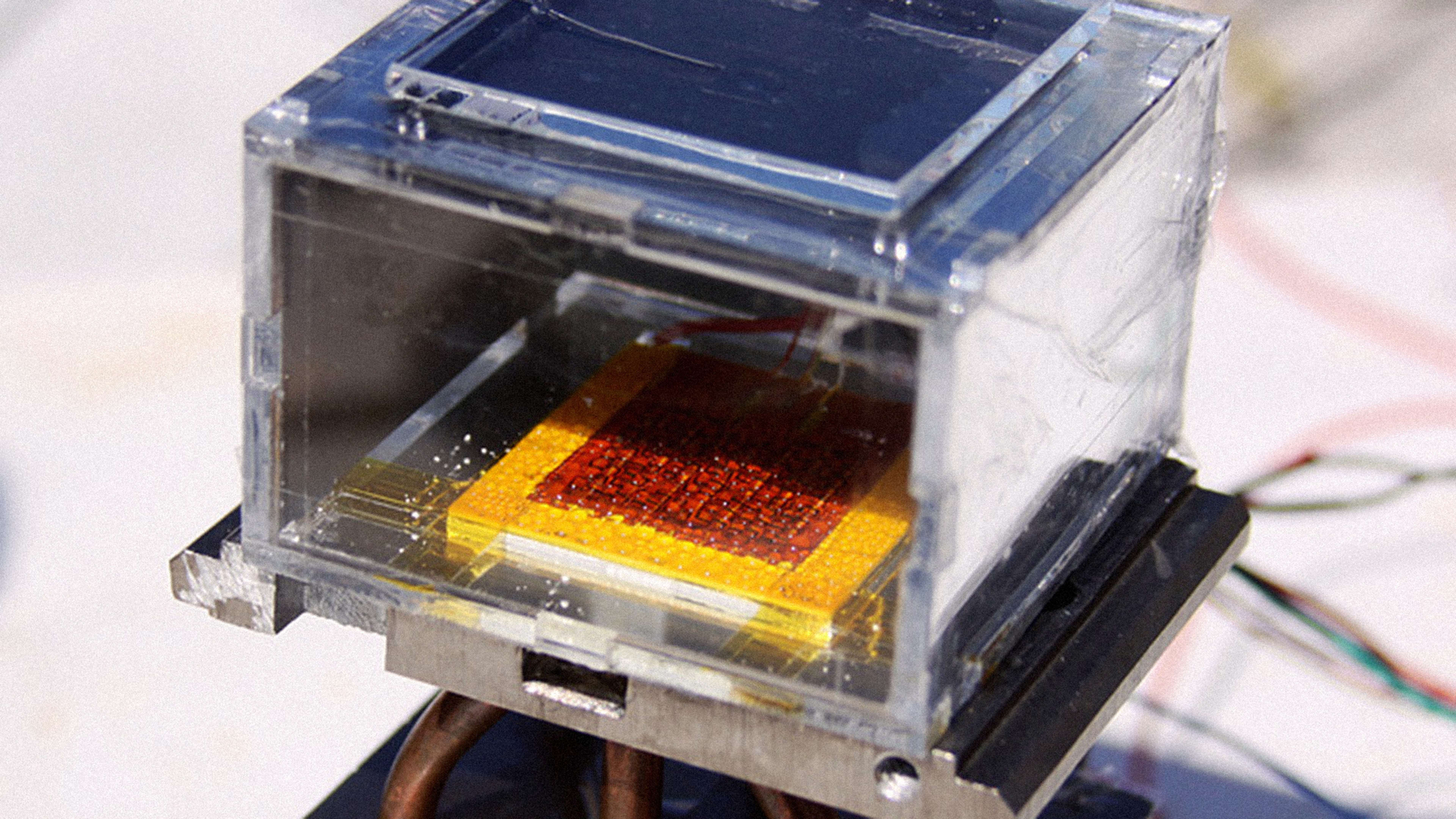In Kenya, where a three-year-long drought was declared a national disaster in February, getting a drink of water can mean walking five miles or more to a well that may or may not be dry. A new device under development now shows how someone in a future drought–or the hundreds of millions of people who lack access to clean drinking water in everyday life–could have water at home. Even in the middle of a desert, the device can pull water from the air, powered by nothing but sunlight.
In a prototype of the device developed by researchers from the University of California-Berkeley and MIT, a small outdoor box is filled with a custom material called a metal-organic framework, filled with tiny pores designed to capture water. At night, the box can be opened up, and as cool night air flows in, the material grabs and holds water molecules.
“Essentially, it’s tailored so that it’s an exceptionally good sponge,” says Evelyn Wang, an associate professor of mechanical engineering at MIT and coauthor on a new paper about the device in Science. “It can capture a lot of water from the humid environment around it, and kind of soak it up in this material.”
During the day, when the box is closed, sunlight heats it up, releasing the water as vapor onto a condenser below. Clean drinking water comes out the bottom.
Technology to pull water from the air isn’t new, but this approach could make it feasible for dry climates. Another technique, called fog harvesting, works only if there’s fog. It’s also possible to use a generator to cool down air below the dew point and collect drops of water, but in extremely dry air, that process takes so much electricity that it becomes impractical. The new device doesn’t need any electricity at all, only ambient sunlight.
“The opportunity here for us is that we’re really trying to address a need in areas where there really are much more arid conditions, and in the desert, where the relative humidities are down to 20%,” Wang tells Fast Company. “Our technologies, we believe, can extract the water and produce clean drinking water–and do it passively, which is also an important aspect when you’re in these remote areas and infrastructure is very limited.”
The prototype, which is roughly the size of a tissue box, can harvest 2.8 liters of water (a little more than half a gallon) in one day from dry air. The next step for the researchers is making it big enough to supply all of the drinking water a small family might need, and optimizing the design to maximize the capture and release of water.
“We think we can scale it up pretty readily in the next few years to be the size of a carry-on suitcase,” she says. “With that kind of scale, we envision that we could potentially provide water for a household of four, about 12 to 15 liters of water.”
An even larger version could potentially supply water for showers, laundry, and other uses beyond drinking water. In drought-prone regions like California, the technology might eventually help houses disconnect from city infrastructure.
The next step for the researchers is to work on how to manufacture the sponge-like material, which has only been produced in the lab, at a large scale. “It’s definitely possible,” says Wang. “It’s just a matter of implementing it and doing it.”
Recognize your brand’s excellence by applying to this year’s Brands That Matter Awards before the early-rate deadline, May 3.
